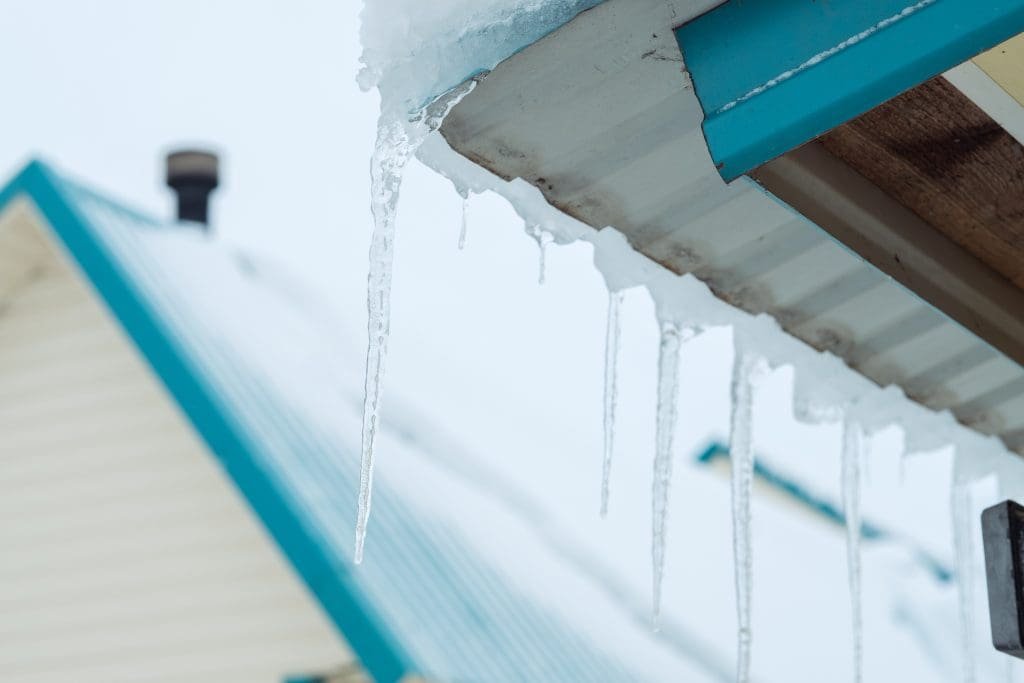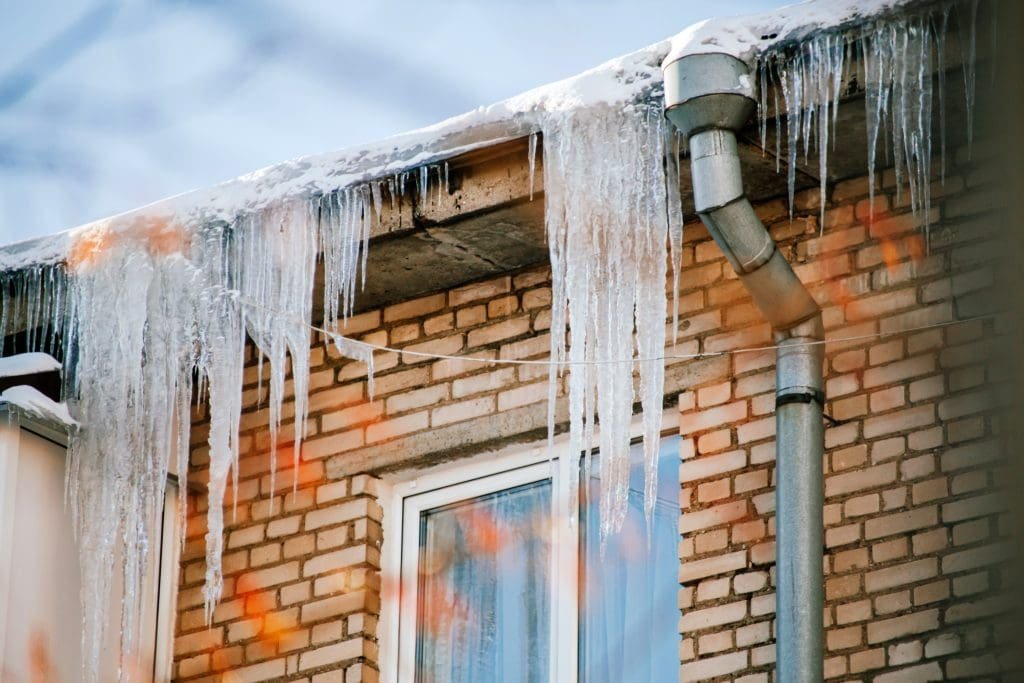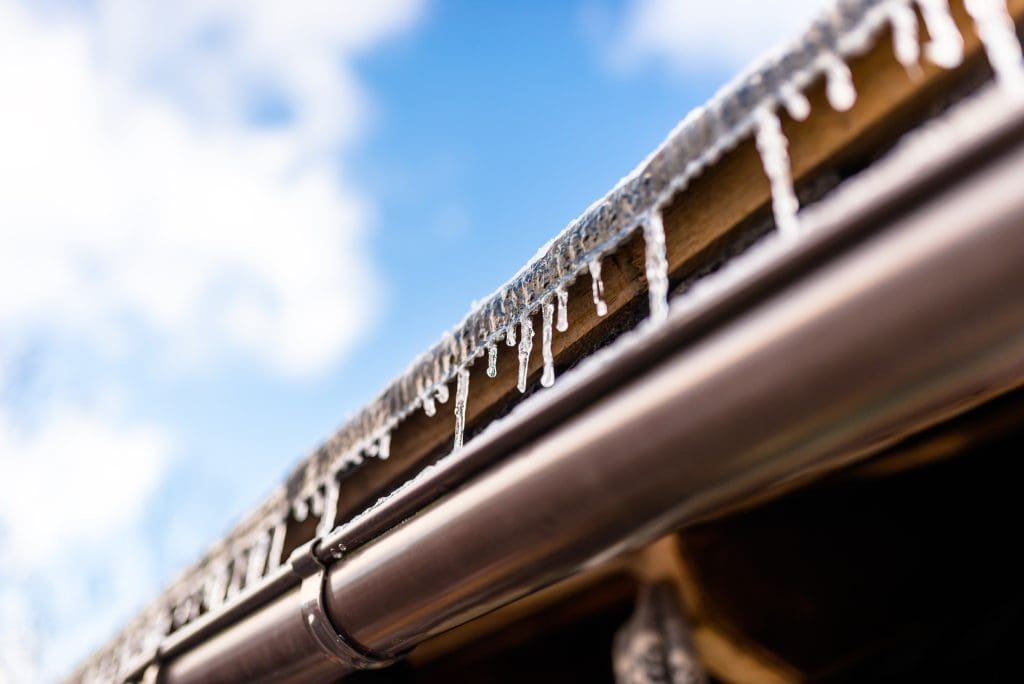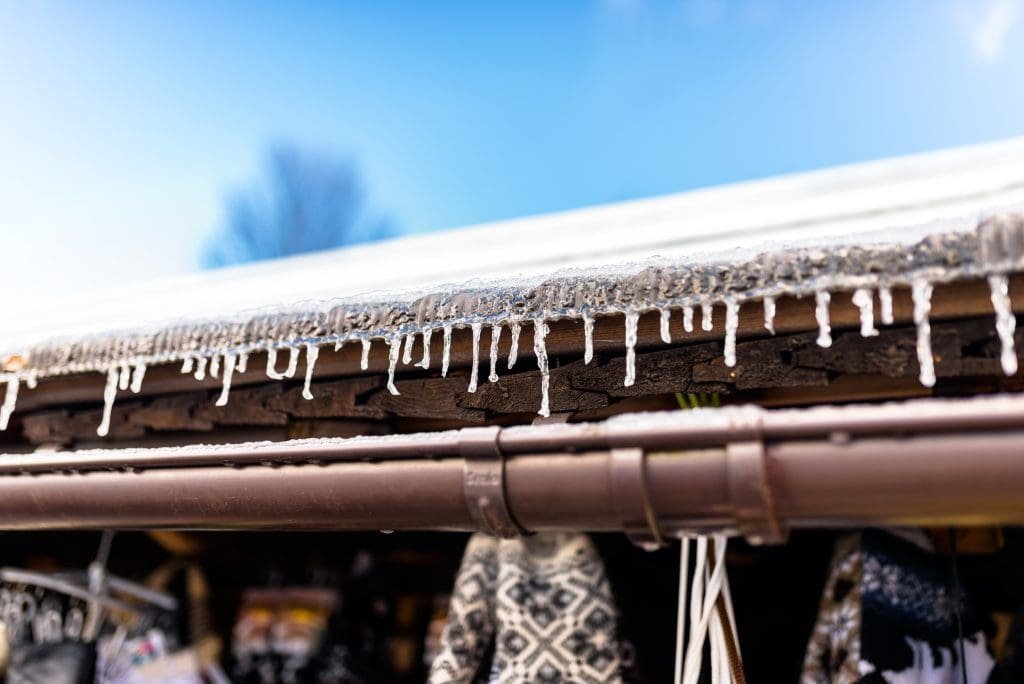As winter approaches, it’s vital to ensure that your home is well-prepared for the season’s challenges. One often-overlooked element of home maintenance is the gutters. Properly preparing your gutters can prevent a slew of issues that arise from heavy snowfall and rainfall. This guide will take you through the essential steps to ensure your gutters are ready for winter.
Understanding the Importance of Gutter Maintenance
Your gutters play a crucial role in protecting your home from water damage. They channel rainwater away from the foundation, roof, and siding, preventing leaks and erosion. Regular maintenance is key to ensuring they function effectively, especially during harsh winter conditions. Neglecting this vital system can lead to a cascade of problems that may not be immediately visible but can escalate into significant issues over time.
When gutters are neglected, they can become clogged with debris like leaves, twigs, and dirt, leading to overflow. This overflow can cause water to pool around your foundation, potentially causing serious structural damage over time. Additionally, stagnant water in clogged gutters can become a breeding ground for mosquitoes and other pests, further complicating the issue. Regular inspections and cleanings, particularly in the fall and spring, can help mitigate these risks and keep your gutters functioning optimally.
The Role of Gutters in Home Maintenance
Gutters are more than just a pathway for rainwater; they are a critical component of your home’s exterior. They help prevent water intrusion, mold growth, and even pest infestations. A well-maintained gutter system ensures that water is directed away from areas it could cause damage. Furthermore, gutters also contribute to the overall aesthetic of your home. Clean, well-maintained gutters can enhance your home’s curb appeal, while dirty or sagging gutters can detract from its appearance.
Moreover, gutters can help prevent unsightly stains on your home’s exterior. This is particularly important if you have brick, stone, or wood siding, which can show water stains and deterioration easily. In addition to protecting the siding, effective gutters also prevent soil erosion in your yard, preserving the landscaping and preventing costly replanting or grading. Investing in quality gutter guards can also reduce the frequency of cleanings and ensure that your gutters remain clear of debris throughout the seasons.
Potential Consequences of Neglected Gutters
Neglecting your gutters can lead to a range of issues, including:
- Foundation damage: Water pooling around your foundation can lead to cracks and other structural issues.
- Mold and mildew growth: Saturated areas can foster mold, which presents health risks.
- Interior water damage: Clogged gutters can cause water to seep into your home, leading to costly repairs.
Being proactive about gutter maintenance can save you time, money, and stress in the long run. Additionally, regular maintenance can extend the lifespan of your gutters, allowing you to avoid the expense of premature replacement. Simple tasks like checking for rust, ensuring downspouts are directed away from the foundation, and repairing any leaks can make a significant difference in the longevity and efficiency of your gutter system. By taking these steps, you not only protect your home but also enhance its overall value.
Assessing Your Gutters Before Winter

Before winter sets in, it’s crucial to conduct a thorough assessment of your gutters. This will help you identify any issues early on so that you can address them before the first snowfall.
Start your assessment by visually inspecting your gutters for any obvious signs of damage or wear. Look for rust, cracks, and sagging sections that might need attention. It’s also a good idea to check the downspouts to ensure they are clear and directing water away effectively. Remember, even small issues can escalate into larger problems if left unattended, especially with the added weight of snow and ice during winter months.
Identifying Common Gutter Problems
There are several common issues that can arise with gutters:
- Clogs: Accumulation of leaves and debris can lead to blockages.
- Leaks: Small leaks can often be repaired, but multiple leaks may indicate a more significant issue.
- Sagging: Gutters that sag can lead to improper drainage, necessitating support and repair.
Identifying these problems early allows for timely repairs, preventing further complications when winter arrives. Additionally, consider the impact of ice dams, which can form when melting snow refreezes in the gutters. This can create a barrier that prevents proper drainage, leading to potential water damage to your roof and home.
Tools Needed for Gutter Assessment
Having the right tools on hand will make your gutter assessment much more manageable. Here’s a quick list of essential tools:
- Ladder
- Garden trowel or scoop
- Hose for flushing debris
- Bucket for debris collection
- Wrench for tightening bolts or screws
Equipped with these tools, you will be able to assess and address any gutter issues effectively. It’s also wise to wear gloves to protect your hands from sharp debris and to have a partner assist you, especially when using a ladder. This not only enhances safety but also allows for a more thorough inspection, as one person can focus on the gutter while the other manages the ladder and tools.
Cleaning Your Gutters: A Necessary Step

After assessing the condition of your gutters, the next step is a thorough cleaning. A clean gutter system is essential for optimal performance during the winter months. Neglecting this task can lead to a myriad of problems, including water damage to your roof and foundation, which can be costly to repair. Additionally, stagnant water in clogged gutters can become a breeding ground for mosquitoes and other pests, creating an unwanted nuisance around your home.
Cleaning gutters can be a messy job, but it’s crucial for preventing blockages and ensuring that water flows freely. Regular cleaning also reduces the risk of ice dam formation during freeze-thaw cycles, which can cause significant damage. Furthermore, a well-maintained gutter system contributes to the overall aesthetic appeal of your home, as overflowing gutters can lead to unsightly stains on your siding and landscaping issues.
Safe and Effective Gutter Cleaning Techniques
Here are some safe and effective techniques for cleaning your gutters:
- Use a ladder safely: Ensure your ladder is stable and positioned correctly. It’s best to have someone hold the base for added safety. Always maintain three points of contact when climbing, and avoid overreaching to prevent falls.
- Remove debris: Use your hands or a scoop to remove leaves and debris from the gutters. Place the debris in your bucket to keep the area tidy. Wearing gloves can protect your hands from sharp objects and dirt.
- Flush the gutters: After removing the bulk of the debris, use a hose to flush out any remaining muck and check the flow. This step is vital for ensuring that downspouts are clear and functioning properly.
Cleaning your gutters at least twice a year can make a significant difference in their performance. In addition to spring and fall cleanings, consider inspecting them after heavy storms to remove any additional debris that may have accumulated.
Disposing of Gutter Debris Responsibly
Once you’ve cleaned out your gutters, you need to dispose of the debris properly. Here are some tips:
- Compost organic material like leaves and small twigs. This not only reduces waste but also provides nutrient-rich material for your garden.
- Check with your local waste management for guidelines on disposing of larger debris. Some municipalities offer special yard waste collection services that can be very helpful.
- Consider collecting debris in a reusable bag to minimize waste. This approach not only helps the environment but also makes transporting debris easier.
Responsible disposal helps keep our environment clean and minimizes landfill waste. Furthermore, engaging in eco-friendly practices can inspire your neighbors to do the same, fostering a community-wide commitment to sustainability. By taking these steps, you contribute to a healthier ecosystem while also maintaining the integrity of your home.
Repairing and Sealing Your Gutters

Once your gutters are clean, it’s essential to address any repairs. Repairs may seem daunting, but many can be done as a DIY project if you have the right skills and tools. Regular maintenance not only keeps your gutters functioning properly but also helps protect your home from water damage that can arise from clogged or damaged gutters.
Common repairs include sealing leaks and reattaching loose sections. Making these repairs before winter can prevent complications when snow and ice accumulate. Additionally, ensuring that your gutters are in good working order can help mitigate the risk of ice dams forming, which can lead to significant water damage to your roof and interior walls.
When and How to Repair Your Gutters
Repair your gutters during your fall cleaning, as this is when you will notice most issues. It’s best to act immediately, particularly if you spot any leaks or sagging sections. Pay close attention to areas where the gutters are connected to the downspouts, as these joints are often the first places to develop leaks due to the constant flow of water.
To repair a leak:
- Clean the area around the leak.
- Apply a gutter sealant designed for the task.
- Re-attach any loose sections with screws if necessary.
Taking the time to repair your gutters now can prevent painful headaches later on in the winter months. Furthermore, regularly inspecting your gutters can help you catch small issues before they escalate into major repairs, saving you both time and money.
Choosing the Right Sealant for Your Gutters
Selecting the right sealant is crucial for a long-lasting repair. Consider the material of your gutters when choosing a sealant:
- Aluminum gutters: Use a silicone-based sealant.
- Vinyl gutters: Opt for a specialty vinyl sealant.
- Steel gutters: Rust-inhibiting sealants are advisable to prevent further corrosion.
Correctly applied, these sealants can last several years and significantly extend the life of your gutter system. Additionally, it’s wise to check the manufacturer’s recommendations for your specific gutter type, as using the wrong sealant can lead to premature failure and necessitate further repairs.
In addition to sealants, consider using gutter guards to minimize debris accumulation, which can lead to clogs and overflow. These guards can significantly reduce the frequency of cleaning and maintenance, making your gutter system more efficient and reliable. Investing in high-quality gutter guards can pay off in the long run, as they help maintain the integrity of your gutters and reduce the risk of costly repairs down the line.
Installing Gutter Guards for Extra Protection

For extra protection against debris and clogs, consider installing gutter guards. These can be particularly beneficial in areas with heavy foliage, where leaves and twigs can quickly accumulate and obstruct water flow.
Gutter guards come in various styles and materials, each with its benefits and drawbacks. Choosing the right type can help you reduce the maintenance required for your gutters significantly. For instance, some guards are designed to handle larger debris, while others focus on fine particles, making it essential to assess your specific needs before making a purchase.
The Benefits of Gutter Guards
Gutter guards offer numerous benefits, including:
- Reduced cleaning frequency: They prevent large debris from entering your gutters, reducing the need for frequent cleanings.
- Improved water flow: By keeping debris out, gutter guards ensure optimal water flow, reducing overflow risks.
- Protection against pests: Guards can act as a physical barrier, preventing birds and rodents from nesting.
While there may be an initial cost for installation, the long-term maintenance savings make gutter guards a worthwhile investment. Additionally, many homeowners find that the peace of mind that comes from knowing their gutters are protected from clogs and overflows is invaluable, especially during heavy rainstorms.
Selecting the Right Gutter Guards for Your Home
When selecting gutter guards, consider the following:
- Material: Choose materials like plastic, metal, or foam based on your needs and budget. Metal guards, for example, tend to be more durable, while plastic options may be more affordable and easier to install.
- Style: Options include mesh, reverse curve, and micro-mesh, each offering different benefits. Tailor your choice to your local climate and surrounding environment. For instance, micro-mesh guards are particularly effective in preventing even the smallest debris from entering your gutters.
- Professional installation: If you are not comfortable installing them on your own, hiring a professional can ensure they’re set up correctly. A professional can also provide valuable insights into the best products for your specific situation.
Researching and selecting the right gutter guards can provide peace of mind during the harsh winter months while ensuring the longevity of your gutter system. Furthermore, many manufacturers offer warranties on their products, which can add an extra layer of security to your investment.
Preparing your gutters for winter is a task that should not be overlooked. By understanding the importance of gutter maintenance, assessing, cleaning, repairing, and even installing guards, you can significantly enhance your home’s ability to handle winter’s elements. Follow this step-by-step guide to ensure that your gutters perform at their best this winter and beyond. Remember, a proactive approach to gutter care can save you from costly repairs down the line, making it an essential part of home maintenance that pays off in the long run.





